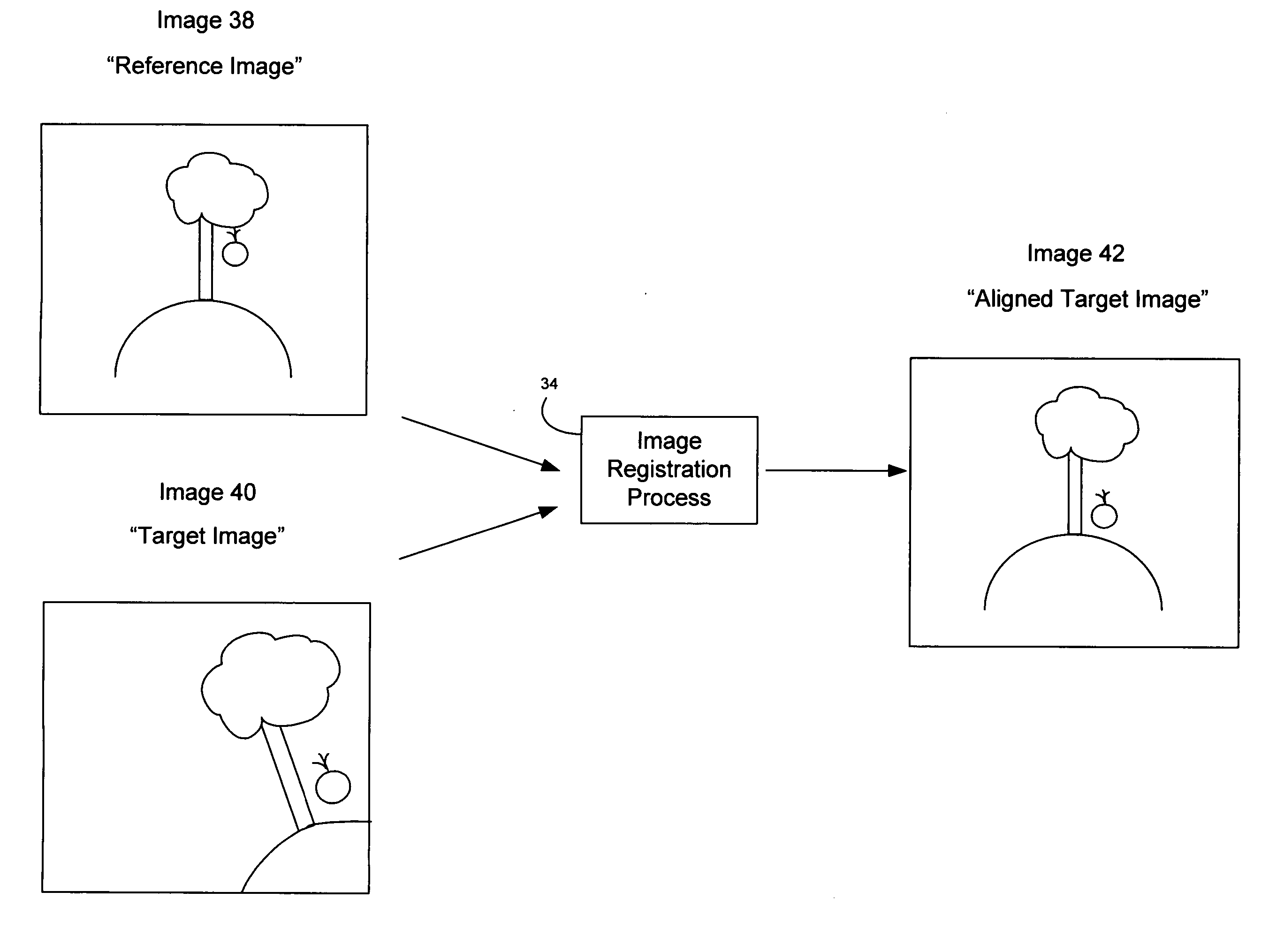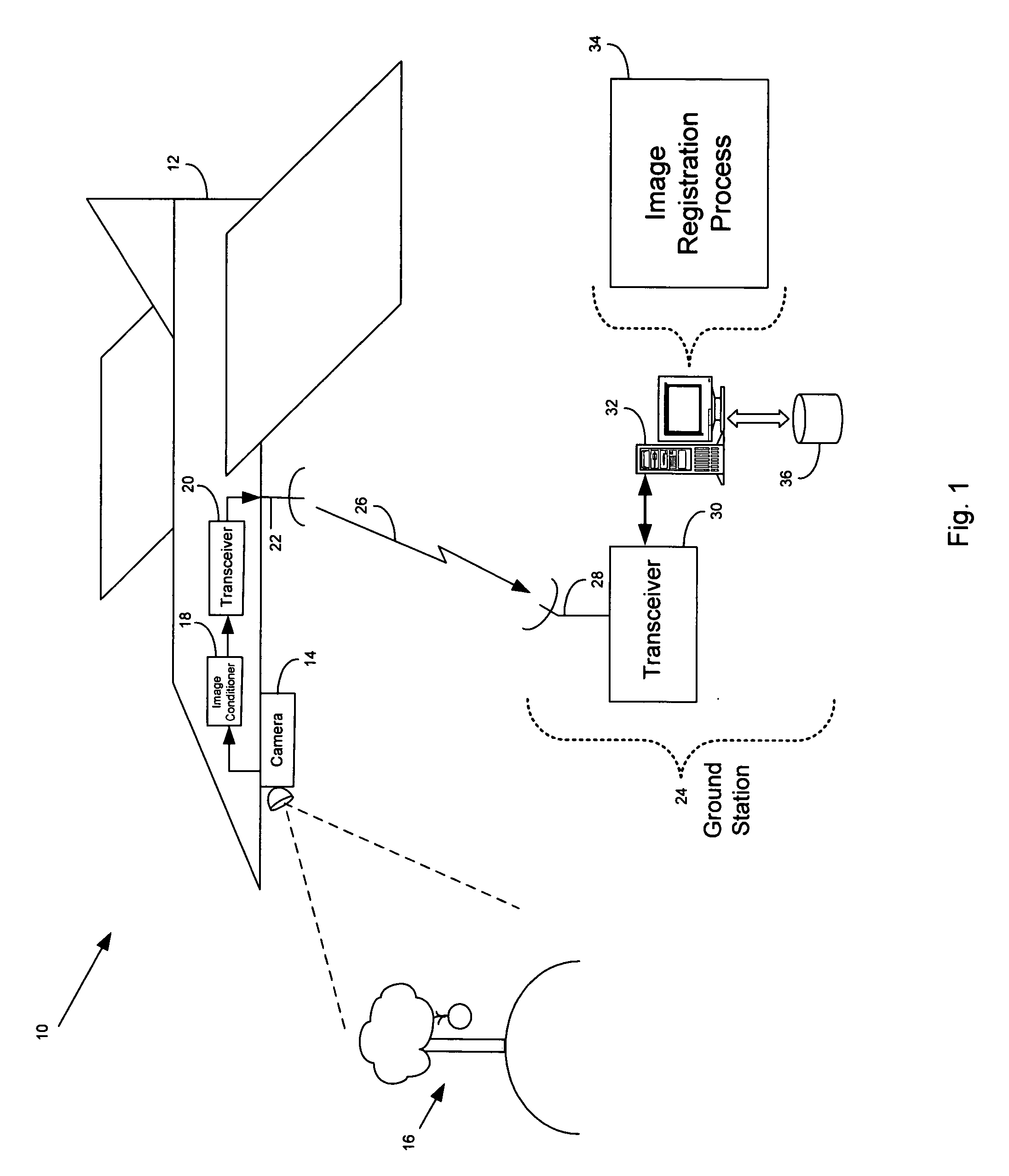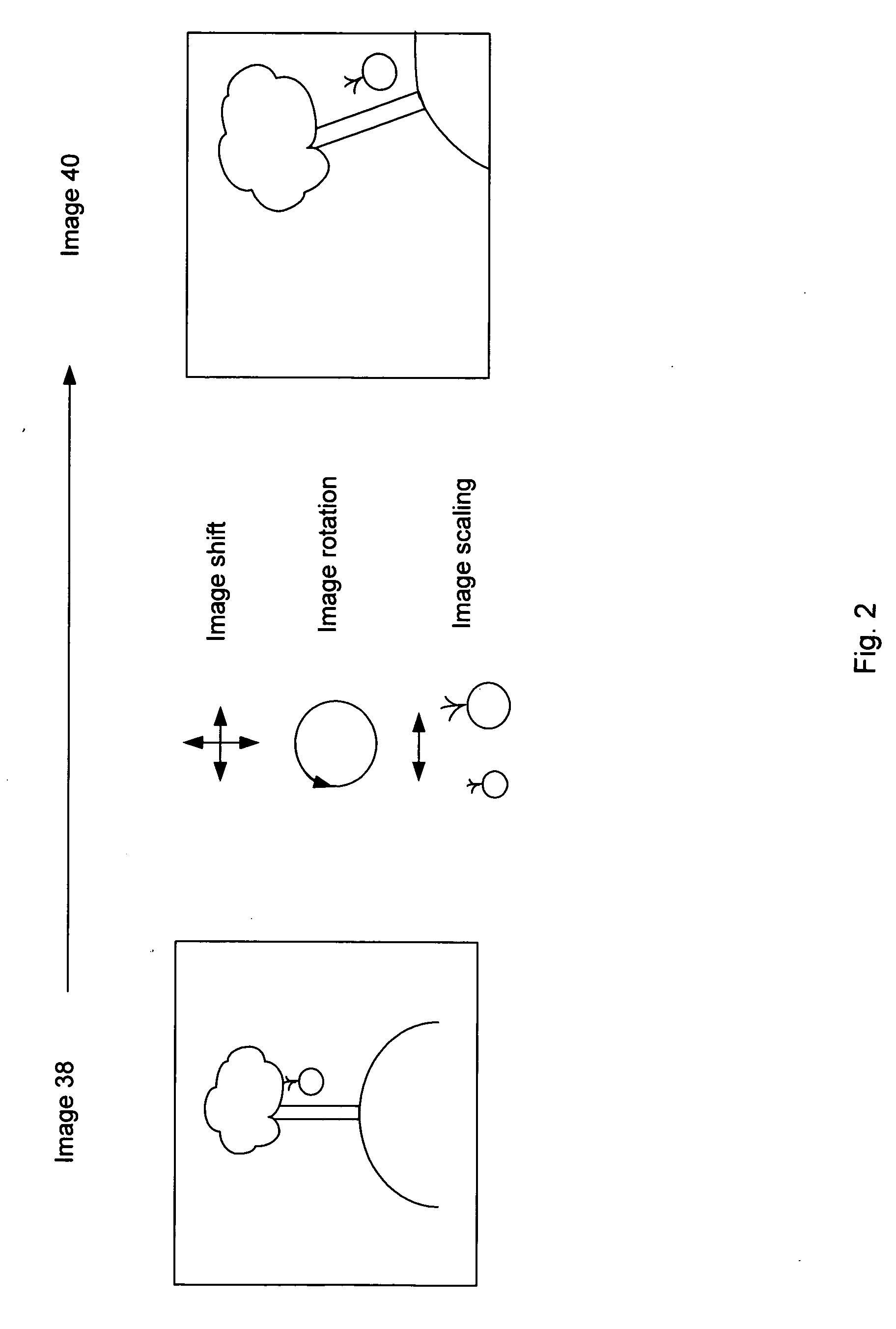Image registration system and method
a technology of image registration and registration method, applied in the field of image processing, can solve the problems of individual image misalignment, computational cost, time-consuming,
- Summary
- Abstract
- Description
- Claims
- Application Information
AI Technical Summary
Problems solved by technology
Method used
Image
Examples
Embodiment Construction
[0028] Referring to FIG. 1, a system 10 for collecting and processing aerial images includes an unmanned aerial vehicle (UAV) 12 in flight that has a camera 14 payload for collecting image sequences for applications such as battlefield monitoring, intelligence gathering, or other similar mission. Typically the camera 14 operates in the visual band to collect photographic images, however, in some arrangements the camera operates in the infrared band or other portion of the electromagnetic spectrum to collect images. The camera 14 collects a sequence of images as the UAV 12 flies over a photographic subject 16 (e.g., buildings, landscape, etc.) such as an apple tree. As the image sequence is collected by the camera 14, the images are passed to an image conditioner 18 which processes the images for storage and transmission. For example, the image conditioner 18 may add a unique time stamp or data representing the location of the UAV 12 (e.g., a GPS location) to each image collected. In...
PUM
 Login to View More
Login to View More Abstract
Description
Claims
Application Information
 Login to View More
Login to View More - R&D
- Intellectual Property
- Life Sciences
- Materials
- Tech Scout
- Unparalleled Data Quality
- Higher Quality Content
- 60% Fewer Hallucinations
Browse by: Latest US Patents, China's latest patents, Technical Efficacy Thesaurus, Application Domain, Technology Topic, Popular Technical Reports.
© 2025 PatSnap. All rights reserved.Legal|Privacy policy|Modern Slavery Act Transparency Statement|Sitemap|About US| Contact US: help@patsnap.com



